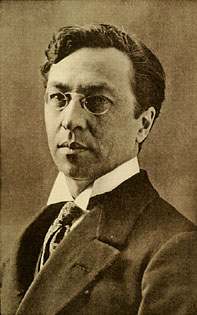

December 16, 1866, was born pioneer of the avant-garde, an amazing artist and theorist of art, Vasily Kandinsky. One of the founders of abstract art, the author of several literary works on art thanks to the power of his talent was able to change the idea of painting, change the course of development of world art forever.
The future artist was born in a well-to-do family, his parents predicted his lawyer’s career, and Kandinsky, having graduated from the law faculty, began his teaching career, which was developing quite successfully. But interest in painting never faded, and at the age of 30 Vasily Kandinsky decides to change life abruptly, leaves teaching and goes to Munich, to private art school of Anton Azhbe, and then continues his studies at the Munich Academy of Arts. In his paintings, even in such an early period, there is a noticeable interest in color, boldness and ambiguity of compositional construction. In 1901, Kandinsky organizes in Munich the “Falanga” society, in which he opens a school, where he teaches himself. During this period, he not only writes and exhibits a lot, but also actively engages in research, creates a book “On the spiritual in art”, as well as memoirs and a collection of poems.
With the outbreak of the First World War, Kandinsky returned to Russia and became an active participant in the socio-political life of the country. After the revolution, the artist is engaged in the development of museum reform, writes articles, participates in the organization of provincial museums, teaches at Free Workshops, and then in Vhutemas. But his ideas about the principles of abstract art have no support, and in 1921 Vasily Kandinsky left Soviet Russia.
Returning to Germany, he receives the post of the head of the workshop of wall painting in Weimar in the Bauhaus (Higher School of Construction and Artistic Design), continuing not only to draw, but also to write theoretical works, for example, “Point and line on the plane.” In 1925, Kandinsky moved to Dessau, where he continued to work and teach. The idea of abstract art was not accepted by the German government, calling it “degenerate,” Kandinsky left Germany in 1932, moving to Paris, where he spent the last years of his life. He died on December 1, 1944 in the suburbs of Paris, and failed to gain popularity in France.